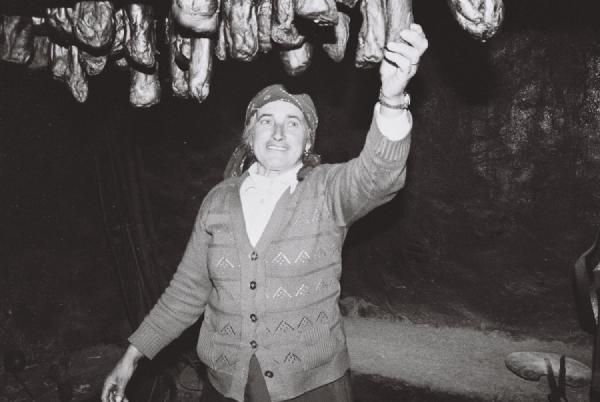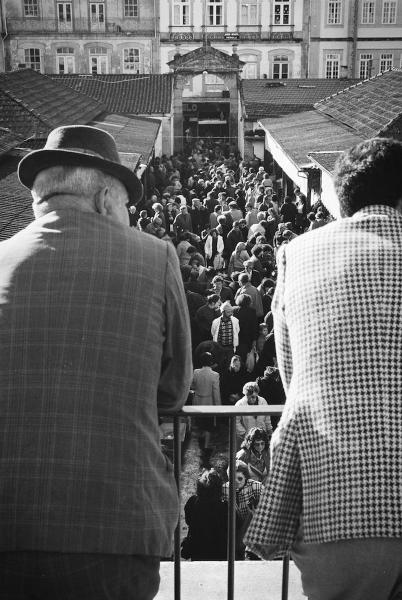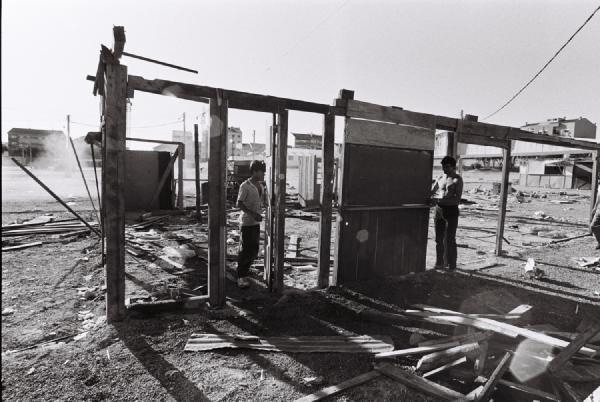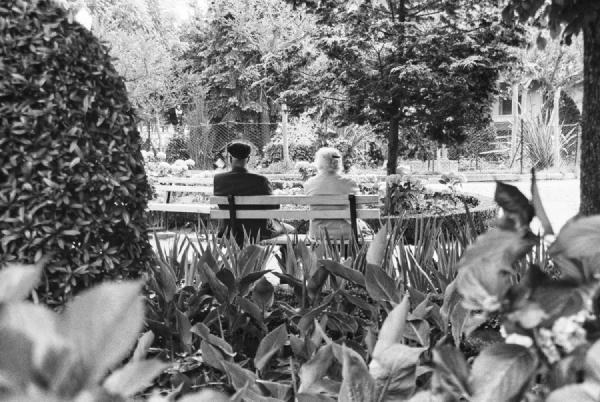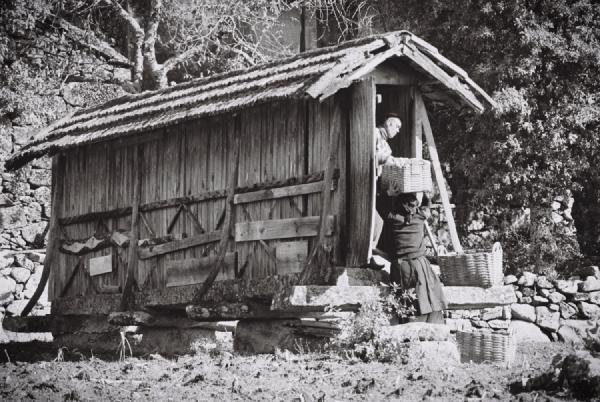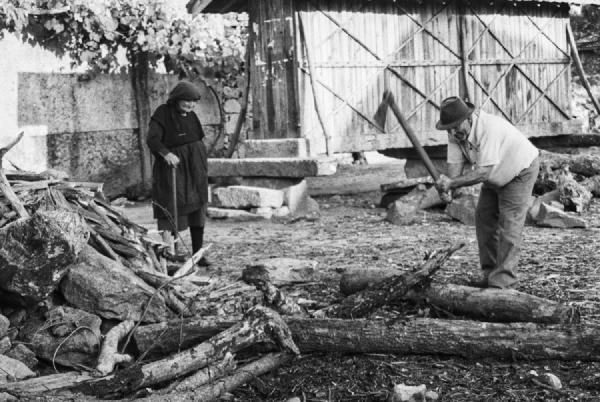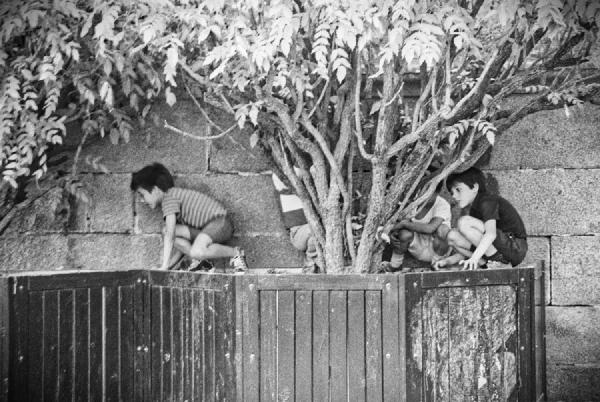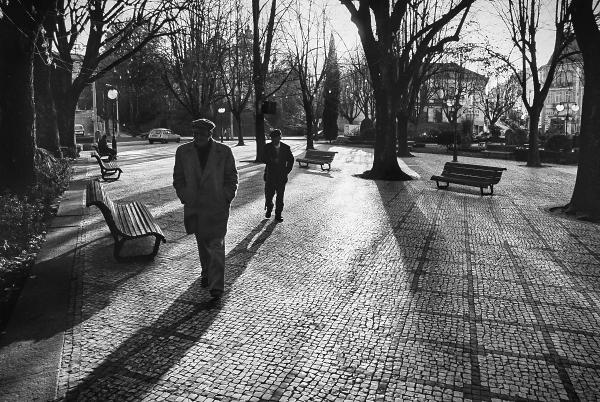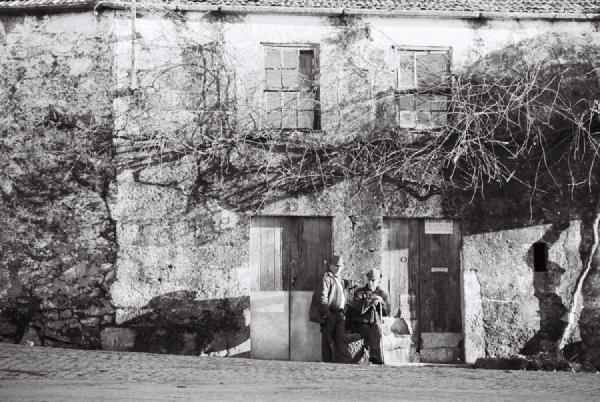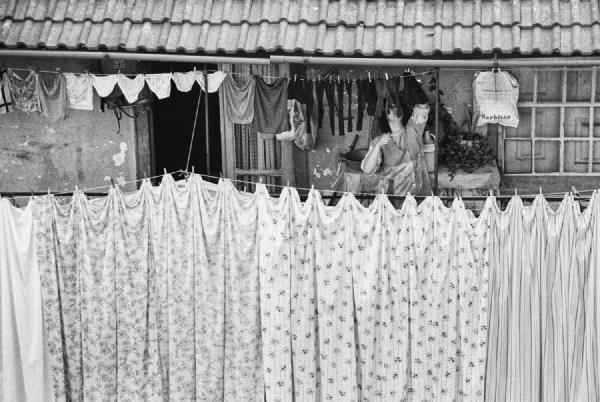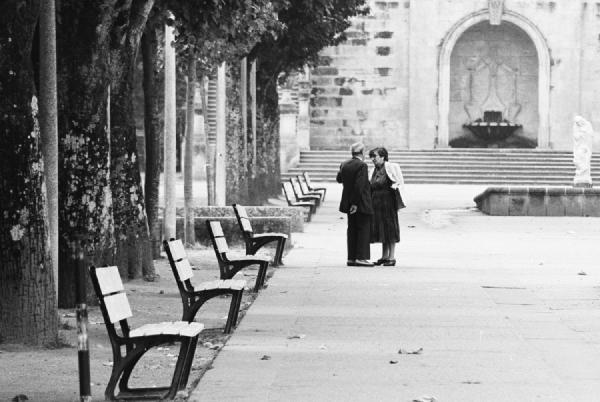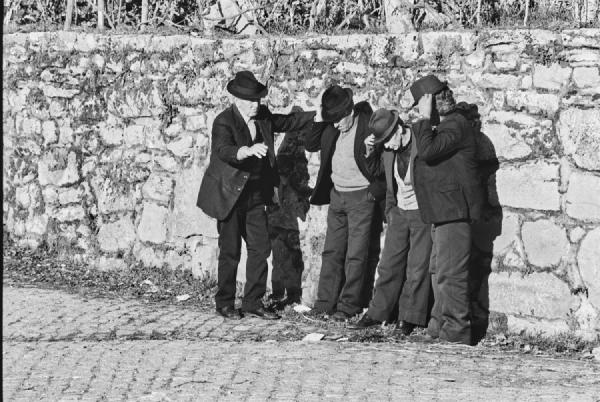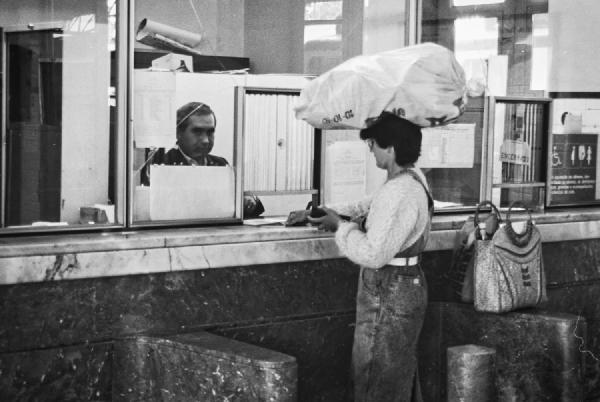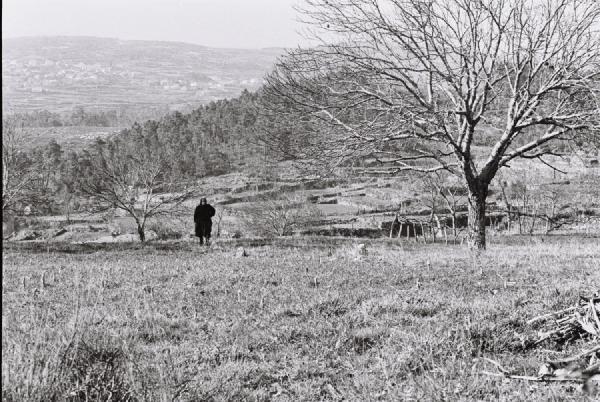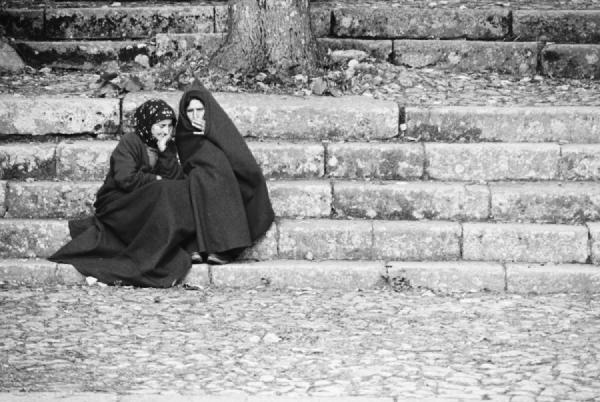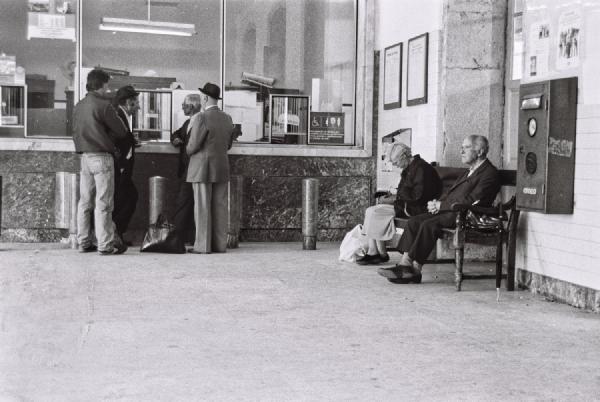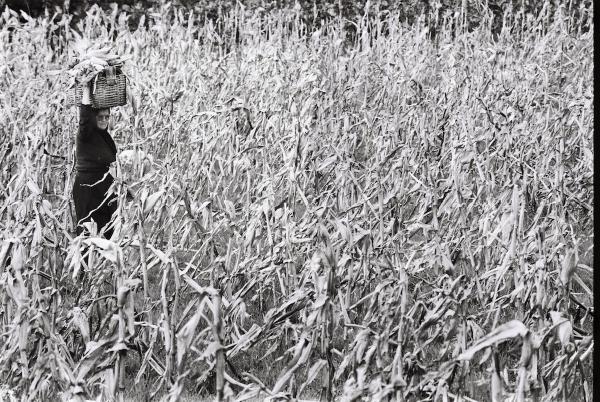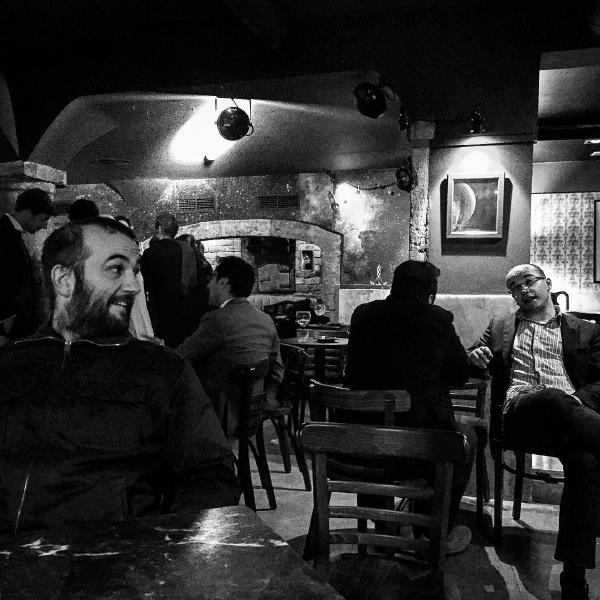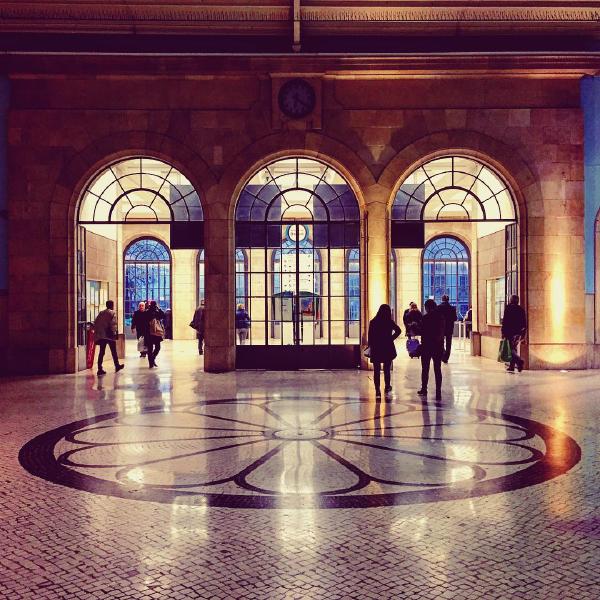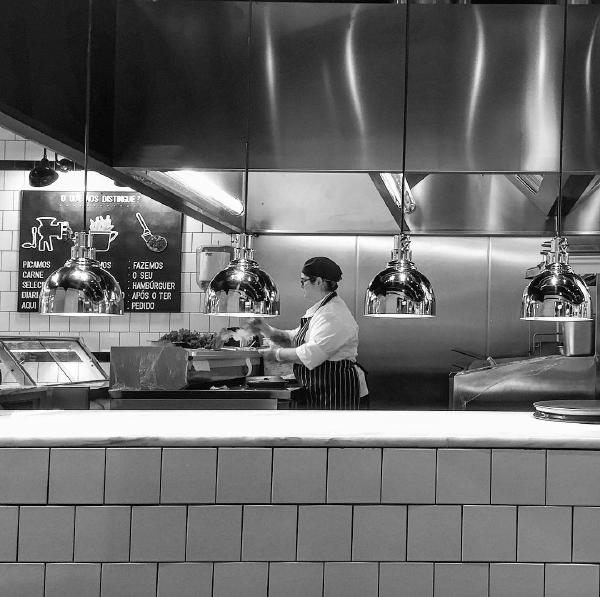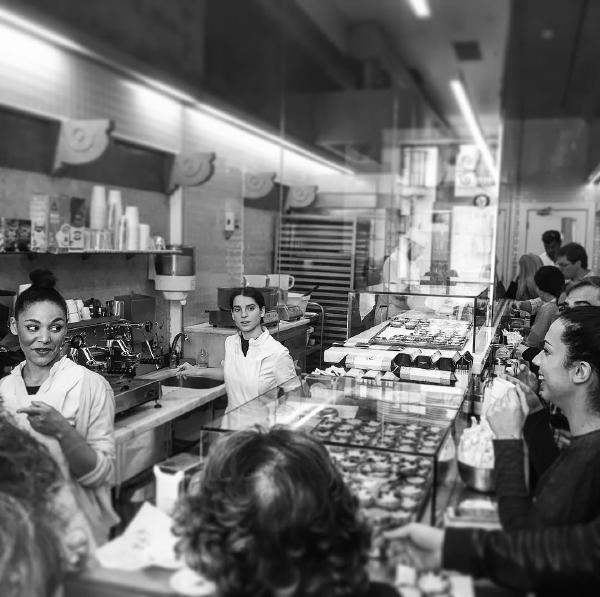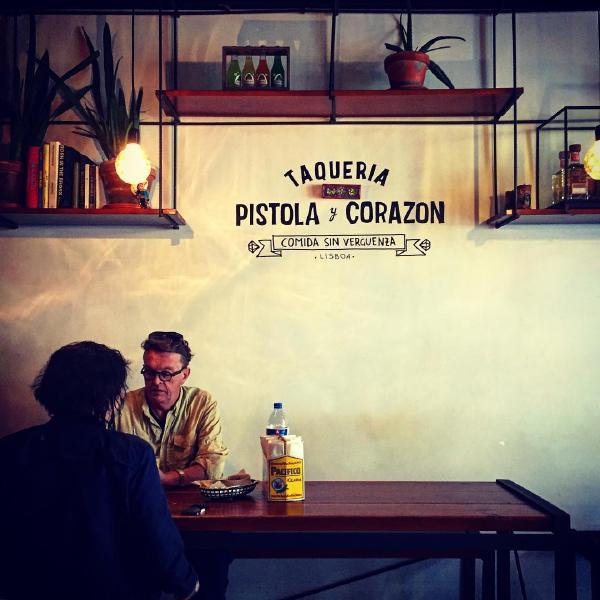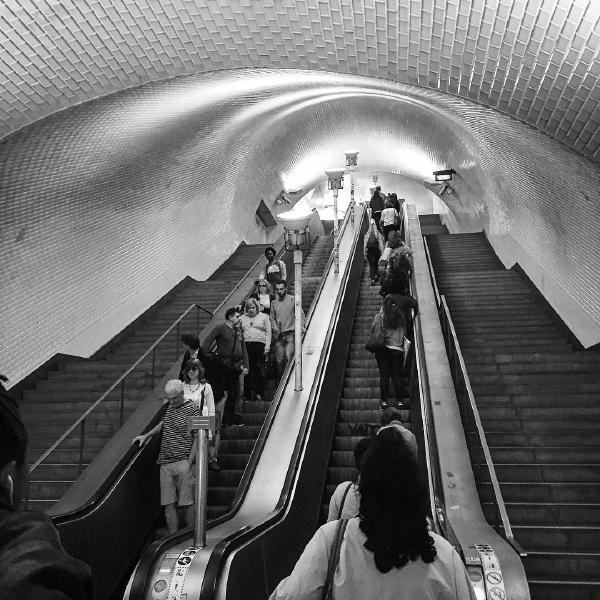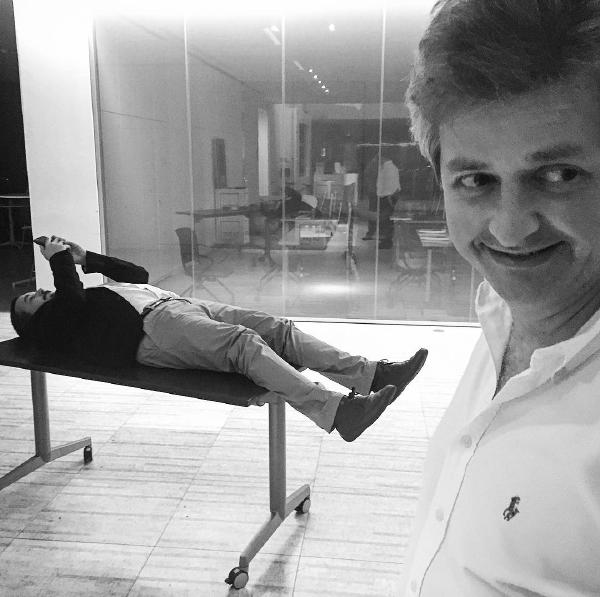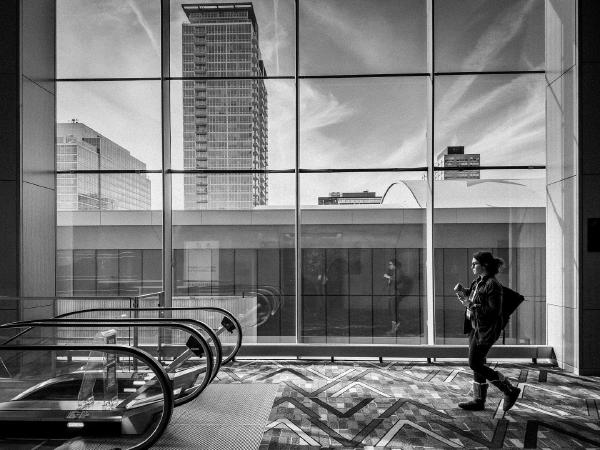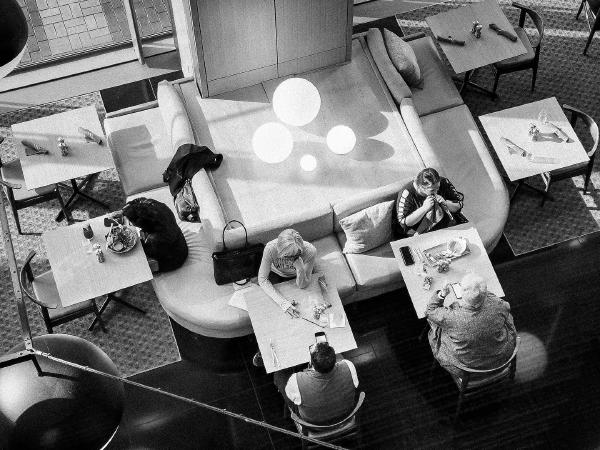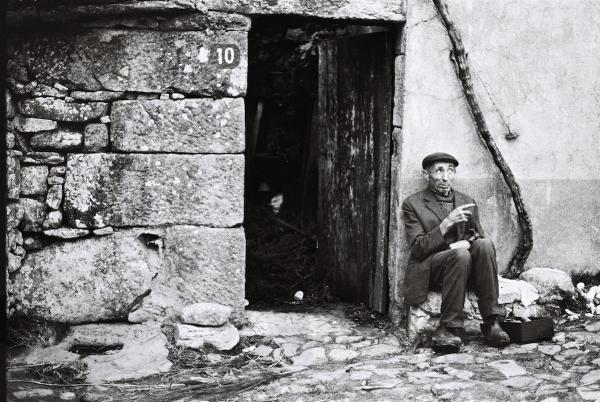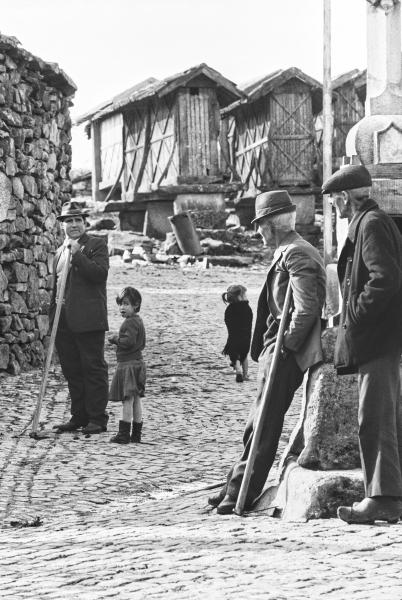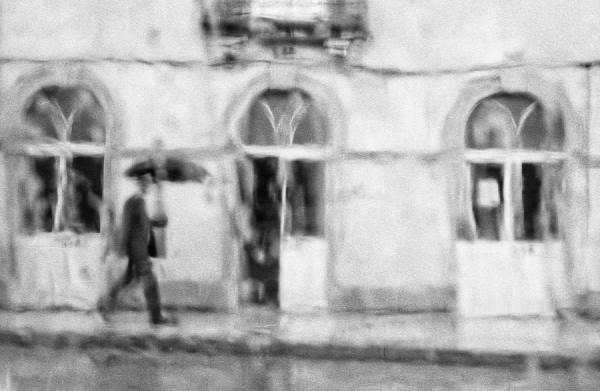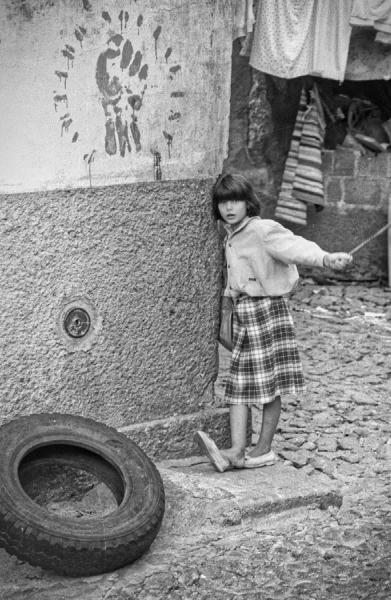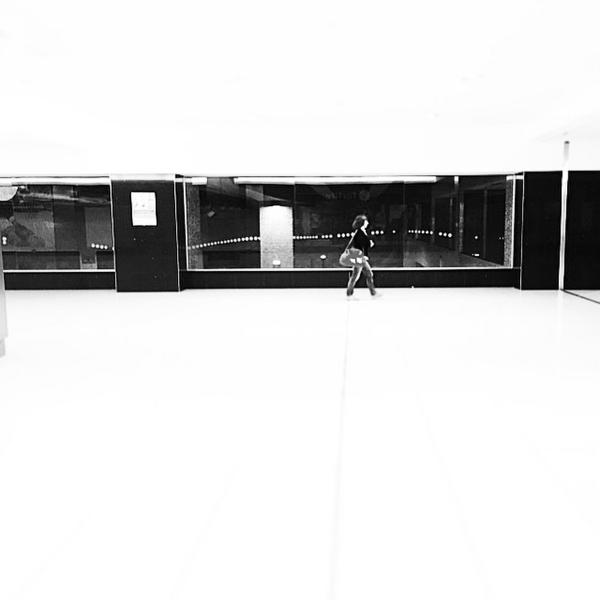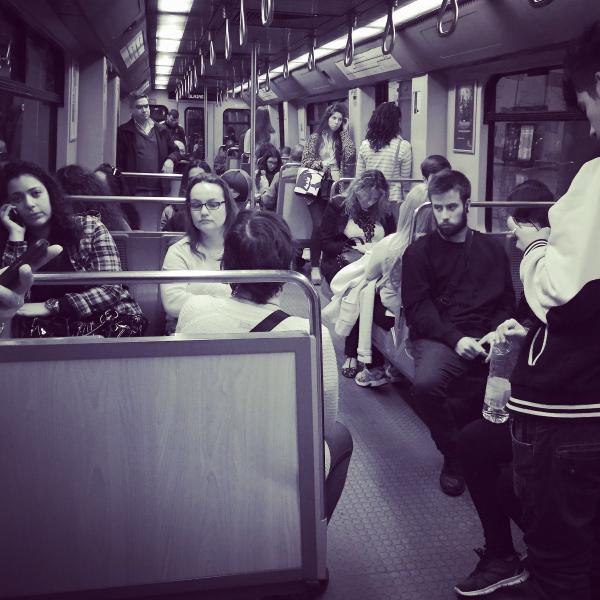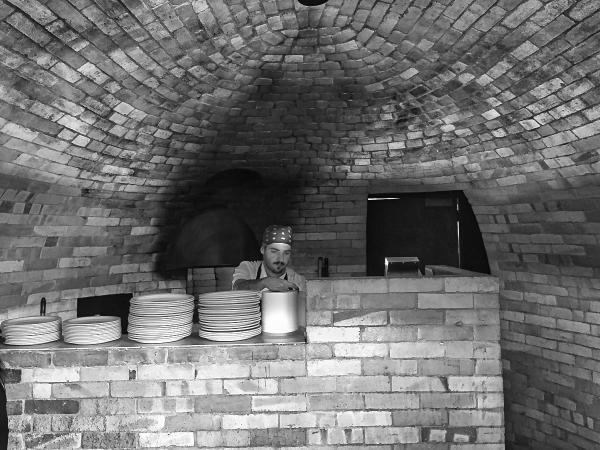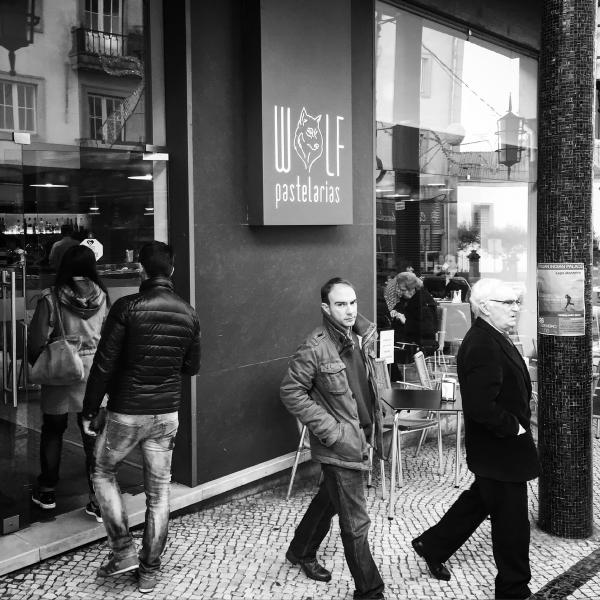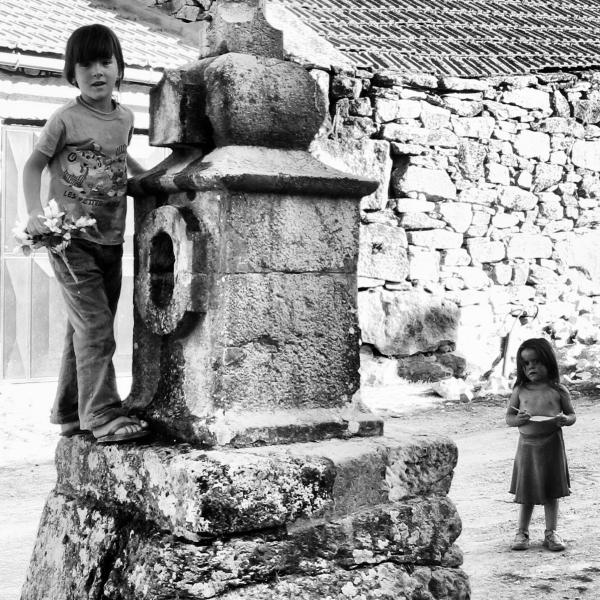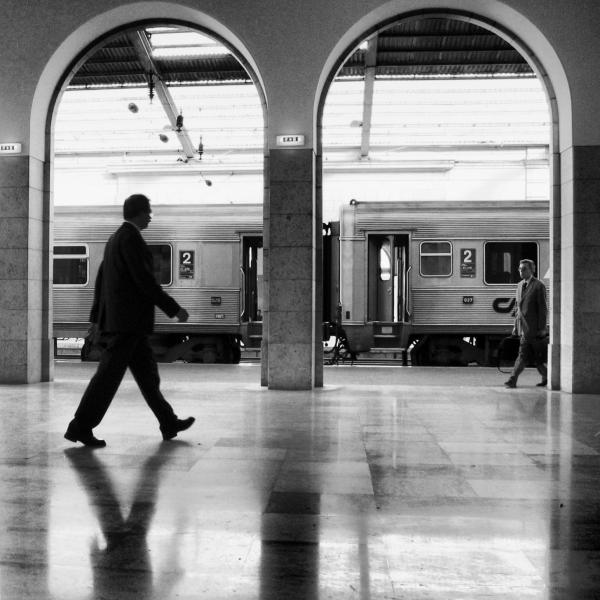people
![]() A woman (D.Lurdes) proudly shows a salpicão hanging in the fumeiro; the traditional Portuguese way of curing smoked meats. The pieces of pork, seasoned with salt and garlic, would hang for months near the fireplace, where the constant smoke slowly matured them, giving that deep and unmistakable flavor. This is how salpicão was made in the villages, unhurriedly, with nothing but the warmth of the fire and the knowledge passed down through generations. The kitchen became the heart of the house, the smoke clung to the beams and even to the clothes, but it carried with it the comforting scent of rural life. No factory can truly replicate that flavor, because the secret was in the patience and the lived atmosphere around the fire.
A woman (D.Lurdes) proudly shows a salpicão hanging in the fumeiro; the traditional Portuguese way of curing smoked meats. The pieces of pork, seasoned with salt and garlic, would hang for months near the fireplace, where the constant smoke slowly matured them, giving that deep and unmistakable flavor. This is how salpicão was made in the villages, unhurriedly, with nothing but the warmth of the fire and the knowledge passed down through generations. The kitchen became the heart of the house, the smoke clung to the beams and even to the clothes, but it carried with it the comforting scent of rural life. No factory can truly replicate that flavor, because the secret was in the patience and the lived atmosphere around the fire.
![Viseu, late 1980s. The old market 2 de Maio, full of life and energy, with a character all its own. From the balcony above, it was a sea of movement and stories, a snapshot of everyday life that today feels both distant and familiar.]() Viseu, late 1980s. The old market 2 de Maio, full of life and energy, with a character all its own. From the balcony above, it was a sea of movement and stories, a snapshot of everyday life that today feels both distant and familiar.
Viseu, late 1980s. The old market 2 de Maio, full of life and energy, with a character all its own. From the balcony above, it was a sea of movement and stories, a snapshot of everyday life that today feels both distant and familiar.
![Viseu, São Mateus Fair, late 1980s. Strongly inspired by the style of the great photographer Henri Cartier-Bresson, this image captures the dismantling of a fairground structure. At that time, photographic equipment was scarce and expensive. My dear friend Mr. Brigadeiro from Foto Brasil lent me a 20mm wide-angle lens that practically changed the way I looked at photography. The need to get close when capturing certain moments left a lasting impression. From that moment on, my fascination with wide-angle lenses began. It was captivating to compress everything the eye could see into the limited space of a single frame.]() Viseu, São Mateus Fair, late 1980s. Strongly inspired by the style of the great photographer Henri Cartier-Bresson, this image captures the dismantling of a fairground structure. At that time, photographic equipment was scarce and expensive. My dear friend Mr. Brigadeiro from Foto Brasil lent me a 20mm wide-angle lens that practically changed the way I looked at photography. The need to get close when capturing certain moments left a lasting impression. From that moment on, my fascination with wide-angle lenses began. It was captivating to compress everything the eye could see into the limited space of a single frame.
Viseu, São Mateus Fair, late 1980s. Strongly inspired by the style of the great photographer Henri Cartier-Bresson, this image captures the dismantling of a fairground structure. At that time, photographic equipment was scarce and expensive. My dear friend Mr. Brigadeiro from Foto Brasil lent me a 20mm wide-angle lens that practically changed the way I looked at photography. The need to get close when capturing certain moments left a lasting impression. From that moment on, my fascination with wide-angle lenses began. It was captivating to compress everything the eye could see into the limited space of a single frame.
![]()
![After harvesting the corn, a couple stores the cobs inside a canastro, a traditional wooden granary where the corn dries slowly in the open air. In the past, this was part of the rhythm of rural life. Once dry, the corn would be ground and used to make broa, a dense cornbread that was a staple in every household. Nothing was wasted — every cob, every grain, carried the work and care of months in the fields. These small rituals shaped the seasons and the table of an entire family]() After harvesting the corn, a couple stores the cobs inside a canastro, a traditional wooden granary where the corn dries slowly in the open air. In the past, this was part of the rhythm of rural life. Once dry, the corn would be ground and used to make broa, a dense cornbread that was a staple in every household. Nothing was wasted — every cob, every grain, carried the work and care of months in the fields. These small rituals shaped the seasons and the table of an entire family
After harvesting the corn, a couple stores the cobs inside a canastro, a traditional wooden granary where the corn dries slowly in the open air. In the past, this was part of the rhythm of rural life. Once dry, the corn would be ground and used to make broa, a dense cornbread that was a staple in every household. Nothing was wasted — every cob, every grain, carried the work and care of months in the fields. These small rituals shaped the seasons and the table of an entire family
![The timing of this photograph was particularly fortunate, the slight blur of the axe captures the movement and energy of a typical village scene. The man splits firewood while the woman watches, both framed by the quiet harmony of rural life. This image was awarded in a national photography contest, a small recognition of an ordinary but deeply human scene]() The timing of this photograph was particularly fortunate, the slight blur of the axe captures the movement and energy of a typical village scene. The man splits firewood while the woman watches, both framed by the quiet harmony of rural life. This image was awarded in a national photography contest, a small recognition of an ordinary but deeply human scene
The timing of this photograph was particularly fortunate, the slight blur of the axe captures the movement and energy of a typical village scene. The man splits firewood while the woman watches, both framed by the quiet harmony of rural life. This image was awarded in a national photography contest, a small recognition of an ordinary but deeply human scene
![]()
![]()
![]()
![]()
![Lamego, early 1990s. This is one of my all-time favourite photographs. The rhythm of the benches leads the eye toward the two people who met there by chance. The composition feels calm and balanced, capturing a simple, human moment.]() Lamego, early 1990s. This is one of my all-time favourite photographs. The rhythm of the benches leads the eye toward the two people who met there by chance. The composition feels calm and balanced, capturing a simple, human moment.
Lamego, early 1990s. This is one of my all-time favourite photographs. The rhythm of the benches leads the eye toward the two people who met there by chance. The composition feels calm and balanced, capturing a simple, human moment.
![A humorous moment frozen in time. Three men instinctively touching their hats while listening attentively to an older gentleman. The sunlight, the cobblestone street, and the stone wall behind them set the perfect stage for this small village scene.]() A humorous moment frozen in time. Three men instinctively touching their hats while listening attentively to an older gentleman. The sunlight, the cobblestone street, and the stone wall behind them set the perfect stage for this small village scene.
A humorous moment frozen in time. Three men instinctively touching their hats while listening attentively to an older gentleman. The sunlight, the cobblestone street, and the stone wall behind them set the perfect stage for this small village scene.
![A woman buys a train ticket at the old station of Viseu. In many Portuguese villages, it was common to see women carrying heavy bags or baskets perfectly balanced on their heads, a sight that always fascinated me. Here, there’s a quiet contrast: a traditional gesture set against the more formal setting of a city station.]() A woman buys a train ticket at the old station of Viseu. In many Portuguese villages, it was common to see women carrying heavy bags or baskets perfectly balanced on their heads, a sight that always fascinated me. Here, there’s a quiet contrast: a traditional gesture set against the more formal setting of a city station.
A woman buys a train ticket at the old station of Viseu. In many Portuguese villages, it was common to see women carrying heavy bags or baskets perfectly balanced on their heads, a sight that always fascinated me. Here, there’s a quiet contrast: a traditional gesture set against the more formal setting of a city station.
![Vila Nova de Paiva, 1990s. A person dressed in black, standing calmly, surrounded by a sea of greys. The large tree in the foreground draws the viewer’s eye first, then the gaze moves naturally toward the solitary figure, and finally to the smaller tree in the distance. The composition feels balanced and quiet, leaving a sense of peace and solitude.]() Vila Nova de Paiva, 1990s. A person dressed in black, standing calmly, surrounded by a sea of greys. The large tree in the foreground draws the viewer’s eye first, then the gaze moves naturally toward the solitary figure, and finally to the smaller tree in the distance. The composition feels balanced and quiet, leaving a sense of peace and solitude.
Vila Nova de Paiva, 1990s. A person dressed in black, standing calmly, surrounded by a sea of greys. The large tree in the foreground draws the viewer’s eye first, then the gaze moves naturally toward the solitary figure, and finally to the smaller tree in the distance. The composition feels balanced and quiet, leaving a sense of peace and solitude.
![This is one of my favourite photographs. Titled “O Cochicho” (“The Whisper”), it shows two elderly women sitting on the church steps, dressed in traditional burel capes. Typical village devotees, they quietly share the latest gossip of the village.]() This is one of my favourite photographs. Titled “O Cochicho” (“The Whisper”), it shows two elderly women sitting on the church steps, dressed in traditional burel capes. Typical village devotees, they quietly share the latest gossip of the village.
This is one of my favourite photographs. Titled “O Cochicho” (“The Whisper”), it shows two elderly women sitting on the church steps, dressed in traditional burel capes. Typical village devotees, they quietly share the latest gossip of the village.
![The way people wait has changed a lot. In a time without mobile phones or any other distractions, people simply waited. Sometimes talking to each other, sometimes lost in their own thoughts.]() The way people wait has changed a lot. In a time without mobile phones or any other distractions, people simply waited. Sometimes talking to each other, sometimes lost in their own thoughts.
The way people wait has changed a lot. In a time without mobile phones or any other distractions, people simply waited. Sometimes talking to each other, sometimes lost in their own thoughts.
![Viseu, late 1980s. A woman walks through the cornfield, carrying a basket on her head filled with freshly picked ears. The rhythm of the dry leaves surrounds her, blending work and tradition in a single frame. It’s a quiet scene that speaks of balance, effort, and the simple grace of everyday life in the countryside.]() Viseu, late 1980s. A woman walks through the cornfield, carrying a basket on her head filled with freshly picked ears. The rhythm of the dry leaves surrounds her, blending work and tradition in a single frame. It’s a quiet scene that speaks of balance, effort, and the simple grace of everyday life in the countryside.
Viseu, late 1980s. A woman walks through the cornfield, carrying a basket on her head filled with freshly picked ears. The rhythm of the dry leaves surrounds her, blending work and tradition in a single frame. It’s a quiet scene that speaks of balance, effort, and the simple grace of everyday life in the countryside.
![]()
![]()
![]()
![]()
![]()
![]()
![]()
![]()
![]()
![Somewhere in rural Portugal, early 1990s. This man, sitting by his door with a calm look and steady hand, seems to be giving me directions — though I’m not entirely sure to where]() Somewhere in rural Portugal, early 1990s. This man, sitting by his door with a calm look and steady hand, seems to be giving me directions — though I’m not entirely sure to where
Somewhere in rural Portugal, early 1990s. This man, sitting by his door with a calm look and steady hand, seems to be giving me directions — though I’m not entirely sure to where
![In this photo, the man turns back to exchange a few last words before moving on. Behind him, a young girl, perhaps his granddaughter, does the same. It’s a simple moment, yet it carries a quiet sense of connection between generations.]() In this photo, the man turns back to exchange a few last words before moving on. Behind him, a young girl, perhaps his granddaughter, does the same. It’s a simple moment, yet it carries a quiet sense of connection between generations.
In this photo, the man turns back to exchange a few last words before moving on. Behind him, a young girl, perhaps his granddaughter, does the same. It’s a simple moment, yet it carries a quiet sense of connection between generations.
![This is one of my all-time favourite photographs. It was taken almost by accident, through the window of my father’s car. The rainy day and the low light turned the image into something close to a painting, where the soft, undefined lines blend perfectly with the figure of the man holding an umbrella. No detail is really needed to understand the scene. It feels complete just as it is.]() This is one of my all-time favourite photographs. It was taken almost by accident, through the window of my father’s car. The rainy day and the low light turned the image into something close to a painting, where the soft, undefined lines blend perfectly with the figure of the man holding an umbrella. No detail is really needed to understand the scene. It feels complete just as it is.
This is one of my all-time favourite photographs. It was taken almost by accident, through the window of my father’s car. The rainy day and the low light turned the image into something close to a painting, where the soft, undefined lines blend perfectly with the figure of the man holding an umbrella. No detail is really needed to understand the scene. It feels complete just as it is.
![Taken in Viseu in the late 1980s, this image reminds me of a photojournalistic scene. The expression of the girl and the political symbol painted on the wall have always fascinated me. There’s a quiet tension between innocence and the marks of the world around her. A small moment that feels both ordinary and deeply meaningful.]() Taken in Viseu in the late 1980s, this image reminds me of a photojournalistic scene. The expression of the girl and the political symbol painted on the wall have always fascinated me. There’s a quiet tension between innocence and the marks of the world around her. A small moment that feels both ordinary and deeply meaningful.
Taken in Viseu in the late 1980s, this image reminds me of a photojournalistic scene. The expression of the girl and the political symbol painted on the wall have always fascinated me. There’s a quiet tension between innocence and the marks of the world around her. A small moment that feels both ordinary and deeply meaningful.
![]()
![]()
![]()
![]()
![]()
![]()
![]()
